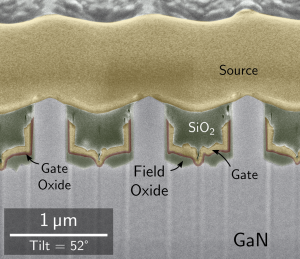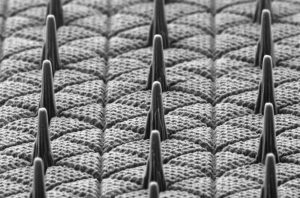Technology translation, startups and intellectual property
U.S. universities are hotbeds of innovative technologies and new knowledge. That knowledge is disseminated into the world through multiple mechanisms. Symposia, conferences, research papers, mutual visits, and other academic activities are effective paths to broadly share the fruits of research. Graduating students and postdocs who continue their careers outside the university bring a strong fundamental education, in-depth understanding, and practical research experience that benefits their new employers.
Many effective technology-transfer avenues from universities to industry exist. Companies that directly sponsor research programs at a university—either individually or through consortia—enjoy early and privileged exposure to research results through periodic updates, progress reports, and formal project reviews. Informal interactions between the company sponsor and the university research team are effective means for sharing detailed insights and know-how that might never be published. Joint research projects that bring together university and industry collaborators are particularly effective in enabling fruitful direct exchanges. Through periodic formal and informal interactions, industry sponsors can become aware of valuable new directions or significant roadblocks well ahead of the rest of the world.
 It is often the case that the products of university research do not initially reveal their ultimate commercial value. This makes it difficult for companies to decide to license university intellectual property (IP) soon after it is conceived. In microelectronics hardware, where the typical time for an invention to reach the marketplace is 10 years, it takes a certain degree of technology maturation for the value of a new concept to become apparent. This advanced research phase generally implies: 1) scaling down from the relatively large dimensions typical of academic research to state-of-the-art manufacturing feature sizes, 2) developing additional fabrication process modules required to enable the demonstration of sufficiently complex systems, and 3) creating models that can be used to design and predict the performance of future systems enabled by the new technology. At the end of this exercise, one should be able to assess with reasonable confidence the functionality, performance, manufacturability, and reliability, among many other issues, that the new technology will ultimately deliver and thereby decide whether the technology is suitable for transition to volume production.
It is often the case that the products of university research do not initially reveal their ultimate commercial value. This makes it difficult for companies to decide to license university intellectual property (IP) soon after it is conceived. In microelectronics hardware, where the typical time for an invention to reach the marketplace is 10 years, it takes a certain degree of technology maturation for the value of a new concept to become apparent. This advanced research phase generally implies: 1) scaling down from the relatively large dimensions typical of academic research to state-of-the-art manufacturing feature sizes, 2) developing additional fabrication process modules required to enable the demonstration of sufficiently complex systems, and 3) creating models that can be used to design and predict the performance of future systems enabled by the new technology. At the end of this exercise, one should be able to assess with reasonable confidence the functionality, performance, manufacturability, and reliability, among many other issues, that the new technology will ultimately deliver and thereby decide whether the technology is suitable for transition to volume production.
Microelectronics technology maturation requires a tool set, a baseline of established process modules, functional block designs, and strict execution protocols that reflect the ultimate manufacturing environment. Shared university facilities generally cannot meet these high standards. Instead, an effective path for translation of new university technologies is through partnerships with prototyping facilities, national labs and commercial foundries. These entities embody the rigor of a manufacturing environment, while preserving a relatively high degree of flexibility that enables them to embrace new disruptive technologies. The engagement of prototyping facilities lowers the risk and costs associated with elevating university research to manufacturable technology. Prototyping facilities in national labs play the unique and critical role of facilitating the translation of technologies with strategic national security significance. Fostering prototyping facilities and subsidizing engagement with universities to promote technology maturation should be a high priority in a national microelectronics program. Established companies will find it increasingly attractive to directly license university IP once the university has had an opportunity to demonstrate its commercial potential through partnerships with prototyping facilities.
Graduating students and postdocs who continue their careers outside the university bring a strong fundamental education, in-depth understanding, and practical research experience that benefits their new employers.
University-generated tech startups also can have considerable impact in the world. Flourishing innovation ecosystems have emerged around university campuses in the U.S. They attract venture capital, research labs within well-established companies, and startup incubators. These ecosystems support the launch of new companies, enable economic development, and push the next wave of electronic systems. Countless microelectronics startups have evolved into world-class corporations. In addition, many startups are acquired by well-established companies allowing the acquirer to quickly enter a new field at reduced risk and relatively low cost. In all cases, even when they do not ultimately succeed, startups provide extraordinary training opportunities for scientists and engineers that eventually come to benefit future employers. Successful startups generate considerable buzz on campus, which can be effective in rejuvenating the waning student interest in microelectronics. Bottom line: the U.S. innovation ecosystem is the global gold standard, and many countries strive to replicate it.
 Fostering the formation and growth of startups should be among the core goals of a comprehensive national microelectronics strategy. While the U.S. innovation and commercialization record is impressive, many obstacles remain, including the high costs associated with development of microelectronics technologies and access to fabrication facilities. Startup activities could be fostered by providing subsidized access to university facilities when compatible with the university’s core research and educational mission. This access broadens the user pool of a university’s shared facilities, lowering the cost to all players. It further allows startups to build quickly on demonstrated technologies in their native environment without having to invest enormous time and resources in establishing and operating their own facilities, only to replicate results that their founders have already obtained.
Fostering the formation and growth of startups should be among the core goals of a comprehensive national microelectronics strategy. While the U.S. innovation and commercialization record is impressive, many obstacles remain, including the high costs associated with development of microelectronics technologies and access to fabrication facilities. Startup activities could be fostered by providing subsidized access to university facilities when compatible with the university’s core research and educational mission. This access broadens the user pool of a university’s shared facilities, lowering the cost to all players. It further allows startups to build quickly on demonstrated technologies in their native environment without having to invest enormous time and resources in establishing and operating their own facilities, only to replicate results that their founders have already obtained.
The inventors of a technology are often the best entrepreneurs to transition their innovations to market. Incentives for students and postdocs to engage in technology translation activities, whether through startups or by participating in a rigorous prototyping effort, can be created by means of translational fellows programs. These programs would support students and postdocs outside their regular research activities as they explore the commercialization of the technologies they have created.
U.S. universities can retain ownership of inventions created with federal funding under the Bayh-Dole Act. This legislation was established to encourage universities to engage in technology transfer activities. When it comes to technology translation, adequate handling of university-owned IP is key. From the perspective of industry, “robust intellectual property protection is essential to preserving incentives for innovation.” 3 Fostering IP generation and nurturing IP through the long road to societal impact is critical to the long-term competitiveness of the U.S. microelectronics industry. The role of universities in this regard is to create an environment that stimulates and protects innovation and incentivizes its commercialization through commercial licensing.
Fostering the formation and growth of startups should be among the core goals of a comprehensive national microelectronics strategy.
U.S. universities grant licenses to their patented and copyrighted inventions to both established companies and startups if the licensee demonstrates the technical and financial capabilities to develop the early-stage technology into commercially successful products. Research contracts with industry generally include terms that create options for the sponsor to license the IP that is generated in the course of the research in a nonexclusive or exclusive form in a field of use. An exclusive license within a field of use is a crucial asset for a startup, as it confers to it a higher valuation and increases its ability to attract capital.
In recent times, research contracts with industry consortia have come with IP terms that severely limit the ability of universities to license technology in exclusivity—in effect, disincentivizing IP generation. In a way, these terms prioritize existing companies at the expense of future companies. When mixing industry consortia and US government research funds, as is desirable in the launch of ambitious, multidisciplinary, multi-university research programs, much more restrictive IP terms than those typical for U.S. government contracts are ultimately adopted. The sheer size of these programs and the number of consortia players that are involved make IP negotiations highly unbalanced.
A new compact for microelectronics IP generation and protection in a university environment must be established that respects the spirit of the Bayh-Dole Act. An organization with representatives from government, industry, academia, and the venture capital community should be created to generate policies and provide oversight.
As we seek a greater role for public/private partnerships in microelectronics research, a new compact for microelectronics IP generation and protection in a university environment must be established that respects the spirit of the Bayh-Dole Act. An organization with representatives from government, industry, academia, and the venture capital community should be created to generate policies and provide oversight.
³ 2019 SIA Blueprint for Sustained U.S. Leadership in Semiconductor Technology